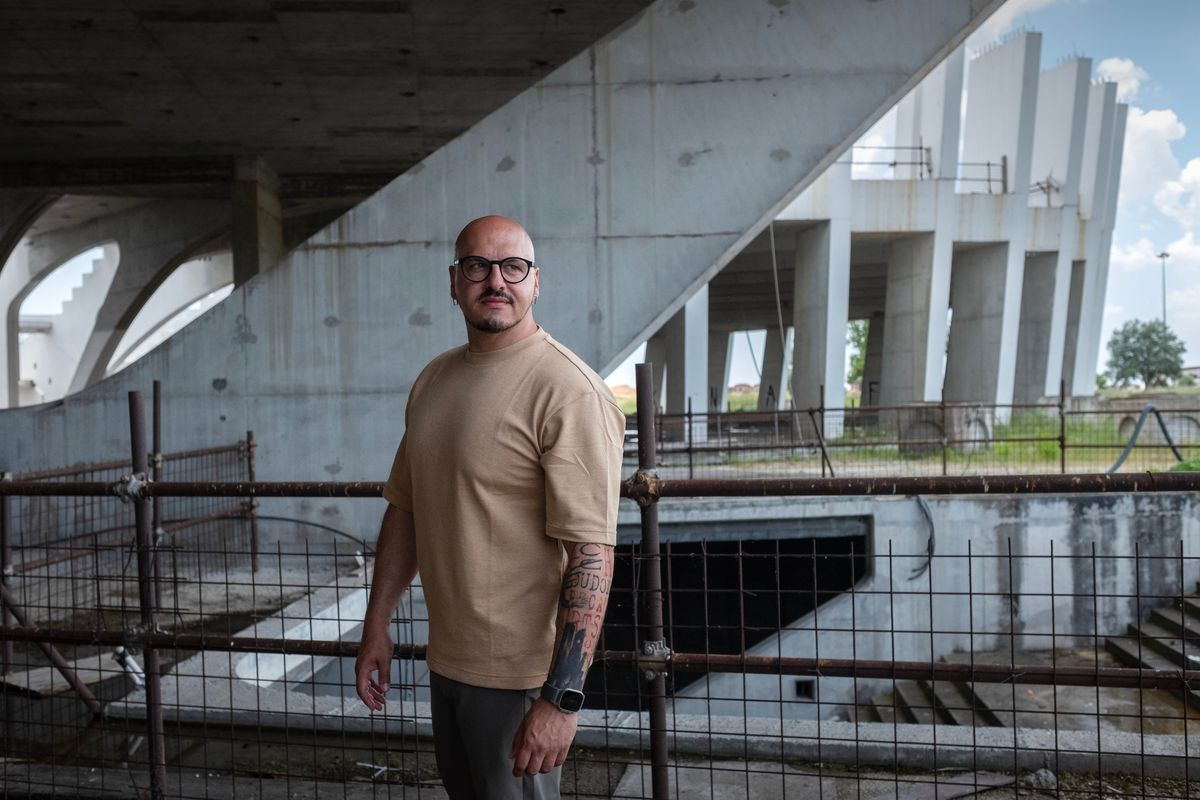Eye on Expo 2030, Rome dreams of reinvigoration

ROME – Other visitors to the abandoned sports complex on the edge of Rome might just see muddy puddles, graffitied walls and loose cables blighting their view. Not Matteo Gatto.
Gatto, the technical director of Rome’s $11 billion bid to host the Expo 2030 world’s fair, envisions a grand exposition hall. In the vast surrounding fields, he sees a winding boulevard spotted with international pavilions and solar-paneled umbrellas. All of it, in his conjuring, is connected to Rome by an extended train line that would bring 30 million people from the Colosseum.
“It will be beautiful,” he said.
But as Italy prepares to give its final pitch in Paris on Tuesday to the 179 international ambassadors who will vote in November on which city will host the Expo, there are two major obstacles standing in the way of Rome’s fantastic, and perhaps fantastical, future.
The first is the competition. Prime Minister Giorgia Meloni of Italy will be in France on Tuesday to make Italy’s case. But so will President Yoon Suk Yeol of South Korea, who is pushing for Busan, and Crown Prince Mohammed bin Salman of Saudi Arabia, who is backing Riyadh in a campaign that, as the Italians see it, has showered public investments on nations in exchange for support.
The second challenge, and perhaps the biggest obstacle to Rome’s grand plan, is one far closer to home: Rome itself.
Years of degradation, seemingly intractable garbage, transportation and infrastructure issues, and a cynical shrug by many Romans about the prospect of transformation or possibility of change are not exactly the stuff of campaign brochures. But officials say a rare confluence of international and national financing, private investment, and a mayor with a reputation for competence has put Rome at a crossroads between decline and resurgence.
The Expo, which helped Milan bloom into a cosmopolitan and international city in 2015, could, its Italian backers say, be decisive in Rome’s rise.
The city sorely needed “a unifying project to set the city, the capital of Italy, on the right track,” acknowledged Giampiero Massolo, an Italian ambassador leading Italy’s Expo campaign.
Back in the early 2000s, when Rome was led by ambitious and popular mayors, the city enjoyed a renaissance with big infrastructure and architecture projects, including the sports complex designed by Santiago Calatrava that Gatto would now like to repurpose.
The so-called Sail, for the soaring latticed roof that divided the sky into a blue grid, was intended to house a World Aquatics Championships. But it was abandoned in 2007 because of skyrocketing costs and accusations of wrongdoing.
It was a harbinger of a city headed downhill. The global financial crisis of 2008 exacerbated Rome’s problems. Hundreds of thousands of residents moved from the city center to cheaper houses in the peripheries. Extending public services to sparsely populated areas became unsustainable. Garbage collection and transportation agencies operating as ineffective patronage mills did not help.
Neither did what many Romans consider successive incompetent governments, including the previous, and much bemoaned, administration of Virginia Raggi, of the anti-establishment Five Star Movement. For many Romans, Raggi’s name became synonymous with the city’s degradation. Garbage-strewn streets attracted wildlife. Buses failed to show up or combusted. The grass in the parks swallowed children.
These days Raggi is president of the special commission for Rome’s Expo bid, and recently presided over an awards ceremony in the headquarters, where children presented posters under a slide reading “Expo 2030: The Eternal City Faces the Future.”
They imagined solar panel cars, buses that worked, fountains with taps to stop wasting water and a “city more adapted to cleanliness” – in short, all the things Raggi was blamed for not doing.
“You guys were great,” Raggi said, “An applause.”
Since she left office, a combination of factors has given the city its best chance in ages to turn things around. Billions of euros have poured into Rome from the European Union’s pandemic recovery fund, national financing for the 2025 Holy Year celebrations promises to spruce up the city and, Expo officials said, will be used to restore the Sail. A relatively affordable capital has drawn foreign real estate investors.
“The city has reached its lowest point and is relaunching, and all the numbers and data are clear on the growth,” said Rome’s mayor, Roberto Gualtieri, a former finance minister. “The expo would be the cherry on the cake. That would give a big boost. But honestly, our strategy does not only depend on Expo.”
The mayor said in an interview that Romans would soon see real changes. An embattled 600-million-euro waste-to-energy plant to solve the city’s horrific garbage problem was “fully on track” to start working in 2026. The maintenance on Rome’s subway lines would be done in about a year and a half, the first tram in about 20 years was in the works, and the repaving of about 500 miles of main streets constituted “the biggest work in the history of the city.”
“On the roads, the metro, the train and the waste, I know that in 2026 this will be fixed,” he said. “I can bet on that.”
He talked about new museums, high-tech industries and an injection of youth and new infrastructure not seen since the early 2000s.